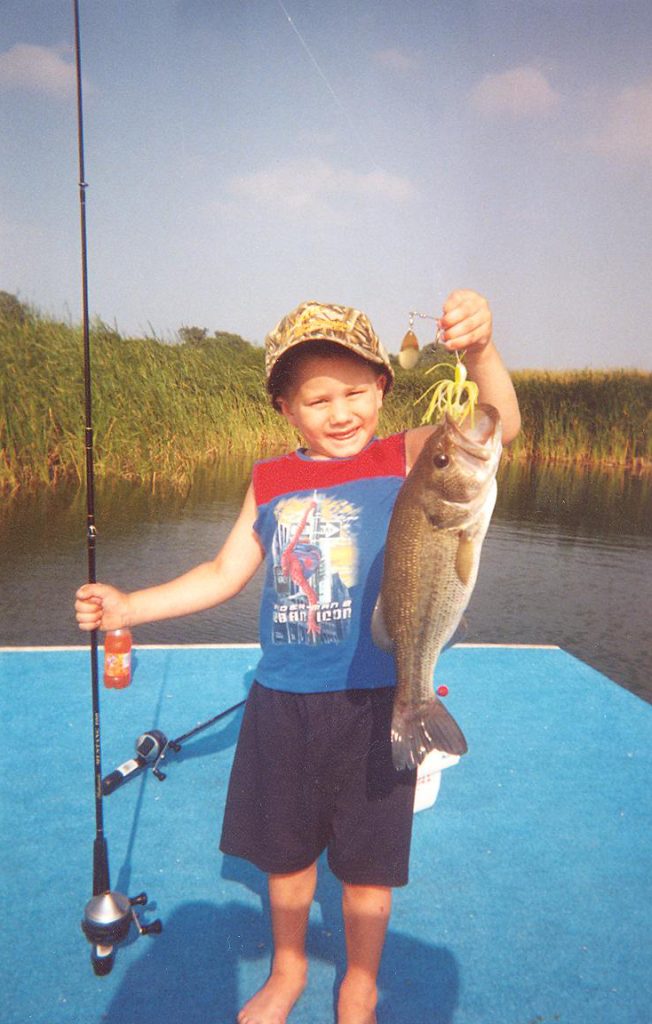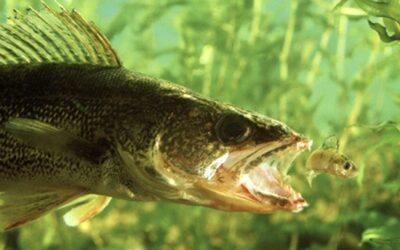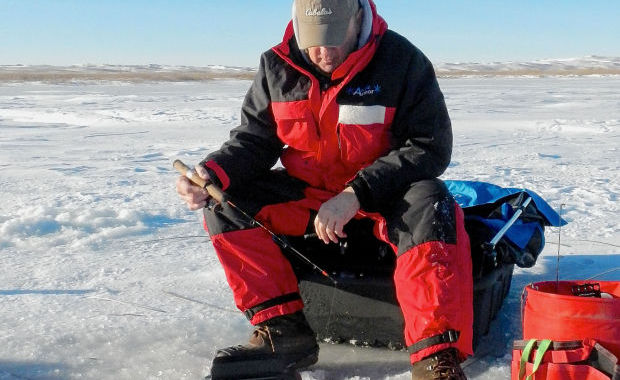When walleye won’t bite, it’s time to pursue other species, like the LM bass, as his grandson Dylan Kneifl did. (Gary Howey photo)
If it’s happened once, it’s happened a dozen times to me and to every angler out there.
You finally hook into a good fish and as it’s peeling off yard after yard of line, you’re thinking, I hope the line doesn’t break!
Just about the time you think you have everything under control, your line goes limp and the fish, a state record in your mind, swims off with you tackle.
You jump up and down, you holler and you use several of those “descriptive” adjectives your mother told you not to use as a kid.
Darn line, broke again”, any way that’s where everyone places the blame!
Reeling your line in, usually the line’s corkscrewed, looking similar to a pigtail.
Well, this is a darn good indicator that it wasn’t the line that broke, it was your knot that slipped or burned through!
Poorly tied knots are the main reason that people loose fish, others are that they try to drag the fish in, not allowing the drag on the reel to work properly or not tiring the fish out using their rod.
In this article we’ll talk about knots as everyone knows how to tie knots right, we learned as kids while we were learning to tie our shoes!
There are several knots out there that really work well and the old Overhand Knot like you tied as a kid is not one of them.
When you tie a knot, you’re taking away from the strength of the line, reducing its strength.
So, you want to tie the best knot you can and this means either the Improved Clinch Knot for monofilament line or the Palomar Knot for braided.
Use the Improved Clinch Knot hook or lure (once for a clinch knot and twice for the improved clinch knot), then wrap the line five to six times around the line back towards the hook or lure.
Once you’ve wrapped the line, slide the loose end of the line through your initial loop.
Then comes the really important part! You’ll then need to wet the line and tighten the knot with a steady even motion, without hesitation.
If you don’t wet the line, the friction created by sliding the monofilament against itself will burn or fray the line.
Try to keep the line as straight as possible because every time you cross the line over itself, there’s a chance of breakage.
The Clinch Knot will give you a knot that is somewhere around 60 or 65% of the line strength. In other wards if you have 10-pound line and tie a good clinch knot, your line could break at 6 or 6.5 pounds.
The Trilene Knot is another knot that’s easy to tie and, if the knot is properly tied, its breaking strength is close to doubling.
This is no problem, as you can land some really big fish on light line as long as you have a good knot, use your rod correctly, have your drag set properly and you don’t try to “horse” the fish in.
If you’re using a braided line such as Fireline, Spiderwire or any of the other super lines, you’re going to want to use a Palomar Knot,
with this knot, you double your line before you put it through the eye of the hook or lure, then you tie and overhand knot, then with the loop that is left over, run it around the hook or lure and pull it tight.
Wetting the knot isn’t as important as it with monofilament line because braided line is tougher than nails.
The Palomar Knot is a 90%-line strength know, so it is the best knot no matter what line you use, just remember when using monofilament line moisten it before you pull the knot tight.
Knots may not seem like a big deal, but if you tie a poor one, the best rod, reel and fishing knowledge won’t do you much good because a good knot is all that truly connects you to that fish of a lifetime!
These knots and others including knot diagrams can be found at on the Bass Pro’s web sight https://1source.basspro.com/news-tips/fishing-knots-how-tie/7871/fishing-knots-professional-fishing-guide-infographic






0 Comments